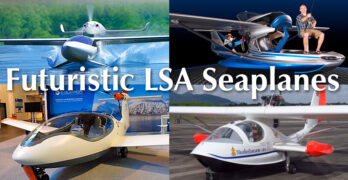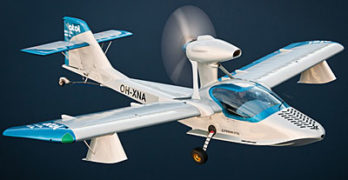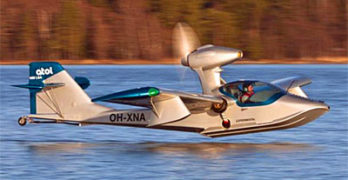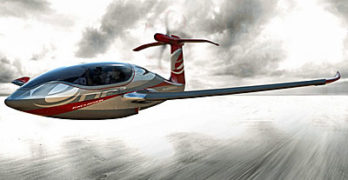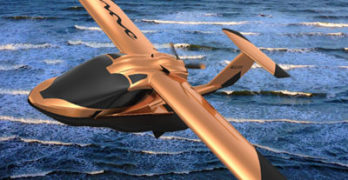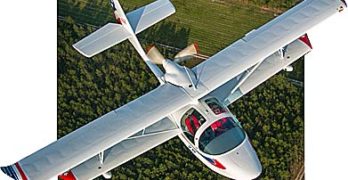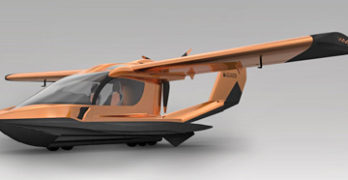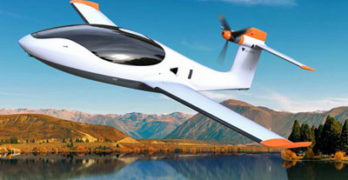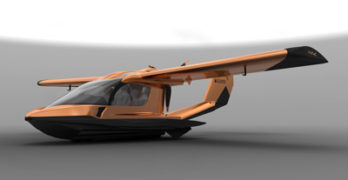UPDATE 11/28/21 — Vickers Aircraft sent fresh images and additional comments. See ••• below. —DJ
Excitement is in the air, even as the season wraps up activity here in the USA. Remember, while winter approaches for Americans, summer is coming to New Zealand.
That might explain an information deficit of late from LSA seaplane developer, Vickers Aircraft. People have been asking questions and reports have become infrequent. Uh, oh…!
Fortunately, the quiet period appears to have a good explanation.
Received November 24th, 2021 — “Hi Dan. Sorry (for a delayed response),” wrote Paul Vickers. “We are pushing very hard for a 10 December first flight. We are structurally testing the wing today.”
Often called a “strongback,” Paul refers to the I-beam steel testing jig seen in the nearby photo. “This was custom designed and manufactured by our Wave team,” he added proudly.
••• “Wave is not just another LSA,” clarified Paul in follow-up email.
Search Results for : MVP
Not finding exactly what you expected? Try our advanced search option.
Select a manufacturer to go straight to all our content about that manufacturer.
Select an aircraft model to go straight to all our content about that model.
Light-Sport Aircraft Seaplane Drama; One Up, One Down, Both Continuing
In the fascinating LSA seaplane sector-within-a-sector, we find both good news and bad news today, though the latter can be overcome. That’s the shortest possible story. More detail follows.
The Good
“It is with great pleasure we can report that Equator Aircraft Norway achieved first fully balanced flight with the P2 Xcursion prototype aircraft over the newly painted runway 22 at Eggemoen Technology Park in Norway,” reported the company. Here’s our earlier report on this fascinating project.
Tested by Eskil Amdal, Equator reportedly accelerated to 70 knots before leaving the ground and flying down the runway at 100 knots at nine meters (about 30 feet, at the edge of ground effect), before landing smoothly. Amdal reported stable flight with good controllability in all axes. Two more flights were performed the following day, further establishing confidence in the flying characteristics.
“The aircraft is a prototype developed by Equator with very limited means since 2010,” explained the company.
Atol Light-Sport Aircraft Amphibian — Design and Production Update
“Coming to America” is a common refrain from light aircraft producers in some countries. Why? The obvious reason is that most designers perceive a huge market in the USA. Another is that shipping from the USA to other countries proves easier than shipping from their home countries. Other reasons also exist but those two are enough to decide in favor of the move.
One builder of a LSA seaplane is Atol Avion, based in Finland. They have been moving steadily toward approval, production, and sale of their Atol amphibian.
Anssi Rekula, co-founder of Avion and the director of sales said, “We have a lot of news and it’s centered on delivery of production airplanes. He enumerated:
We have received new investment to support our European certification, which is expected by the end of 2017.
We have established our North American operation in Brunswick, Maine.
We are scheduling customer demo flights in Finland as soon as the crew is back from Oshkosh 2017 where customers can see and fly the all-new cockpit design (images), and,
We have received our first order from Australia …so all is good and very positive.
Sleek, Sexy Electric Light-Sport Seaplane
AirMax SeaMax — Icon A5 — Vickers Wave — MVP — Lisa Akoya… you only need look at the best promoted brands to see that arguably the most innovative ideas in light aircraft are coming from the LSA seaplane sector. Each of these is a great example of visionary engineering.
Others LSA or light kit seaplane developments — Searey, Mermaid, ATOL Avion, Aero Adventure, among others — are somewhat more conventional but that’s reassuring to some potential buyers. All these names have one enormous advantage. They have practical field experience. Of the five in the first paragraph, only SeaMax has a longer period of use by owners in regular operation.
Now consider Equator Aircraft P2 Xcursion, an electric hybrid seaplane with several compelling ideas. I wrote about this in an article two years ago; now we have an update.
Vickers’ Wave Is Gearing Up Quickly for 2017
Pilots not closely following Light-Sport aviation can be excused for thinking only one LSA seaplane is available. Established LSA companies like Progressive Aerodyne and their Searey or Scoda’s Super Petrel or Airmax’s SeaMax or any number of aircraft to which floats have been fitted may be somewhat baffled by the outsized attention Icon Aircraft’s long-delayed A5 receives from aviation and non-aviation media. On the other hand, most leaders of these companies do admit that Icon’s media juggernaut also brings attention to LSA seaplanes in general.
With that in mind, are you ready for one that might out-WOW the A5? You cannot ride a Wave today, but 2017 may be the breakout year for this impressively-configured LSA seaplane entry from the other down-under country of New Zealand.
Indeed, principal, Paul Vickers — the namesake of Vickers Aircraft — wrote at the end of 2016, “Great strides have been made in the past months here at Vickers.
The Brazilians Are Coming … Super Petrel in USA
Older readers may remember, “The Russians are Coming,” a silly movie about a supposed Russian invasion from 1966. It was a comedy set during the Cold War. Here in the new millennia a different sort of aviation invasion appears to be happening. This time it’s the Brazilians and they are not so much invading as looking for a better place to set up shop.
A decade ago, Brazil was riding high, one of the so-called BRIC countries on the rise as new economic powerhouses. Flush with commodities revenue the government was free to dole out public money very generously and things were looking good. Here in 2016, that situation has changed dramatically. The economy is sluggish, President Dilma Rousseff has been earning approval ratings in single digits, and doing business in Brazil is said to have increasing challenges.
Maybe that’s why Brazilian aviation giant Embraer started making bizjets in Melbourne, Florida … or maybe this country is where many of their fancy Phenom jets sell.
Continental’s Titan Engine to Power Vickers Wave
Big power is not just for LSA taildraggers anymore. A few years back, CubCrafters surprised the LSA world with its installation of the most powerful engine in the LSA space. The western U.S. company mounted a Titan engine from ECi making the modest Cub-like airframe perform far better than the old versions from the Piper company.
At the time, this potent powerplant raised eyebrows for two reasons.
First, it seemed an excess of power for the then-new lightweight class of airplanes FAA had just regulated into existence. Most had been using one of the 9-series engines from Rotax, which in some cases was itself a move up from a two-stroke Rotax 582 providing 65 horsepower. CubCrafters limited power after takeoff to maneuver within the regs, though, honestly, who would continue using so much power in cruise or while sight seeing?
Secondly, the Cub-style airframe is already near the upper LSA empty weight calculation so CubCrafters’ engineers had to add many costly carbon fiber elements to keep the empty weight low enough to fit in the class.
Day Two: LAMA Award and New Rotax Engine
Here is more news from AirVenture 2015, coming from Tuesday, Day Two.
The Light Aircraft Manufacturers Association gave a press conference to a full house. LAMA enjoyed a terrific opening day in its mission of advocacy for Light-Sport, light kit, and ultralight aircraft. Partnered with the U.S. Ultralight Association (USUA), LAMA participated in two very productive meetings, one with EAA’s advocacy experts and another with several key FAA personnel. USUA’s Roy Beisswenger and I hope for good things to follow but felt highly energized that we moved closer to some goals we believe can truly help the light aircraft industry and its pilots.
That was the “business” portion of LAMA’s press conference, but we kept it brief as we had a more meaningful message to deliver.
LAMA has presented its President’s Award for 24 years running to an outstanding individual whose work benefitted the light aircraft sector. Announcing this year’s recipient was one of those bittersweet moments.
Sleeker Is Better In Electric-Propelled Aircraft
If you’ve been following exciting developments like the Airbus/Pipistrel/Cri-Cri English Channel crossing, or for that matter any of the electric airplane developments, you should know that the ideal electric-powered aircraft today are the very lightest weight machines.
However, another quality is just as important while we wait for scientists to significantly amp up the energy density of batteries. That quality is sleekness and I’ve been watching a Norwegian project from Equator Aircraft. Airplanes don’t get much sleeker than this.
If it needed to be even more intriguing, consider that this project comes from a team that has also been involved with seaplanes, so how about a two-seat electric seaplane? OK, it isn’t ready yet but this is one I will continue to follow closely. Following is some detail on this fascinating entry that again suggests the tip of the spear in LSA design seems intently focused on seaplanes.
Equator’ Aircraft P2 Excursion (abbreviated EQP2) is envisioned as a performance hybrid amphibian aircraft.
Riding the Wave … Vickers’ Wave, That Is
As I’ve written a few times, I see a dichotomy in LSA designs. Landplanes appear to have entered a “mature” phase, where changes are incremental, evolutionary rather than revolutionary, if you will. I see nothing wrong with that. To the contrary, it speaks to an industry that knows where it is going and how to achieve design goals. Electric propulsion is still stirring things considerably (witness several recent articles here and elsewhere) but electric motors can work on landplanes or seaplanes.
To my view, it appears the lead in the most innovative design is being done in LSA seaplanes. Perhaps this was triggered by Icon and their A5. The California entry is handsome and well enough marketed to collect many orders. While finally coming to market A5 has been a decade in preparation. This left the door open for more highly innovative entries
Meanwhile existing designs such as Searey and Super Petrel have been much refined and have demonstrated meeting ASTM standards with Searey also achieving Chinese Type Design Approval.


